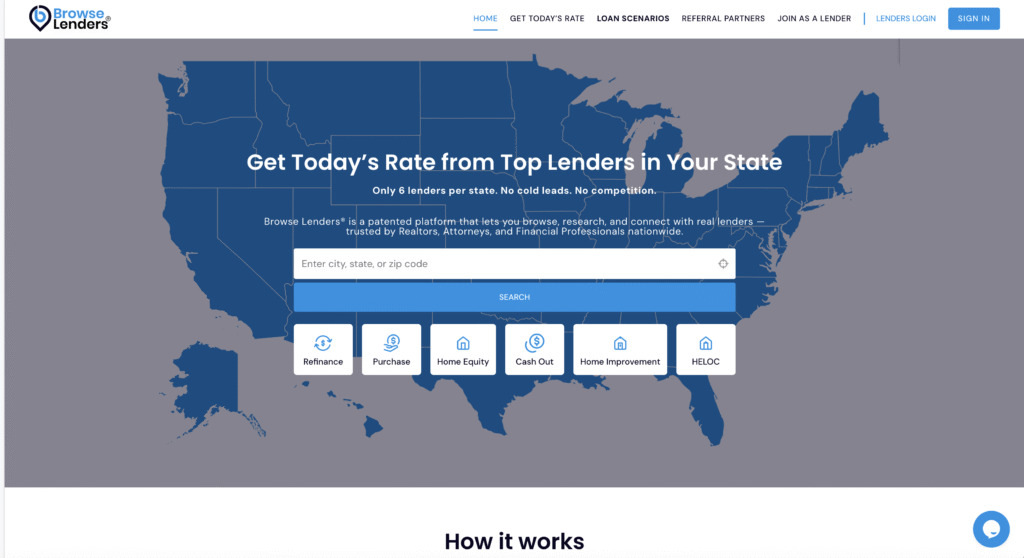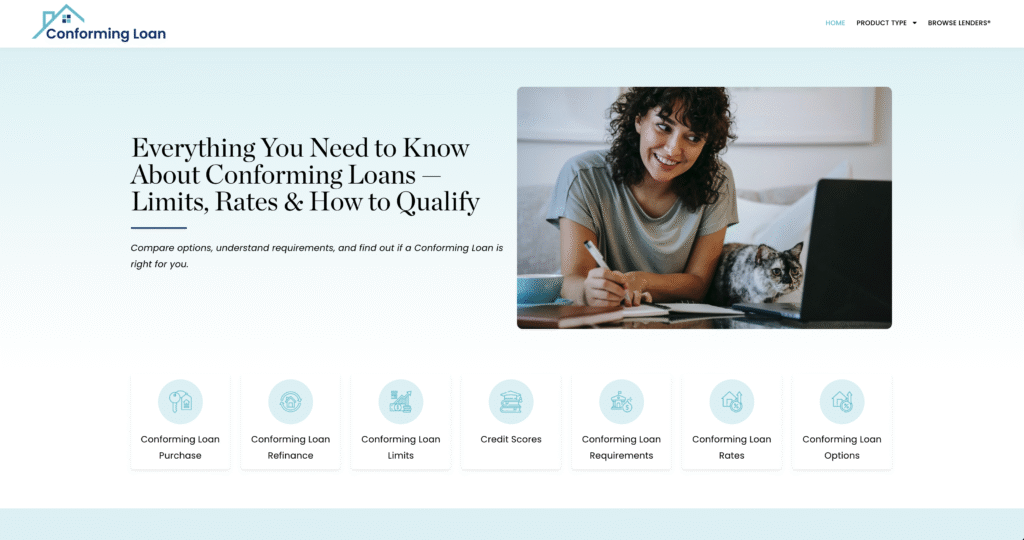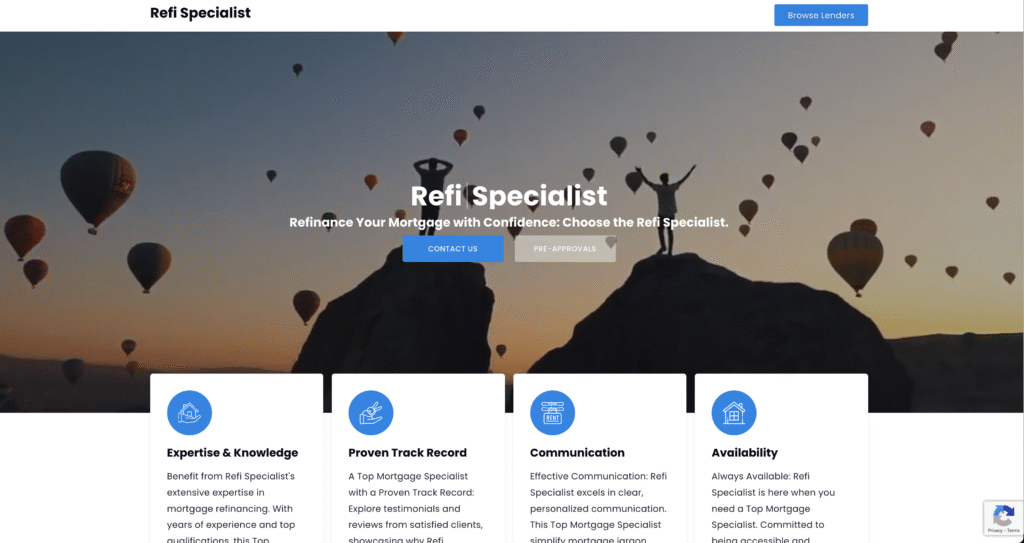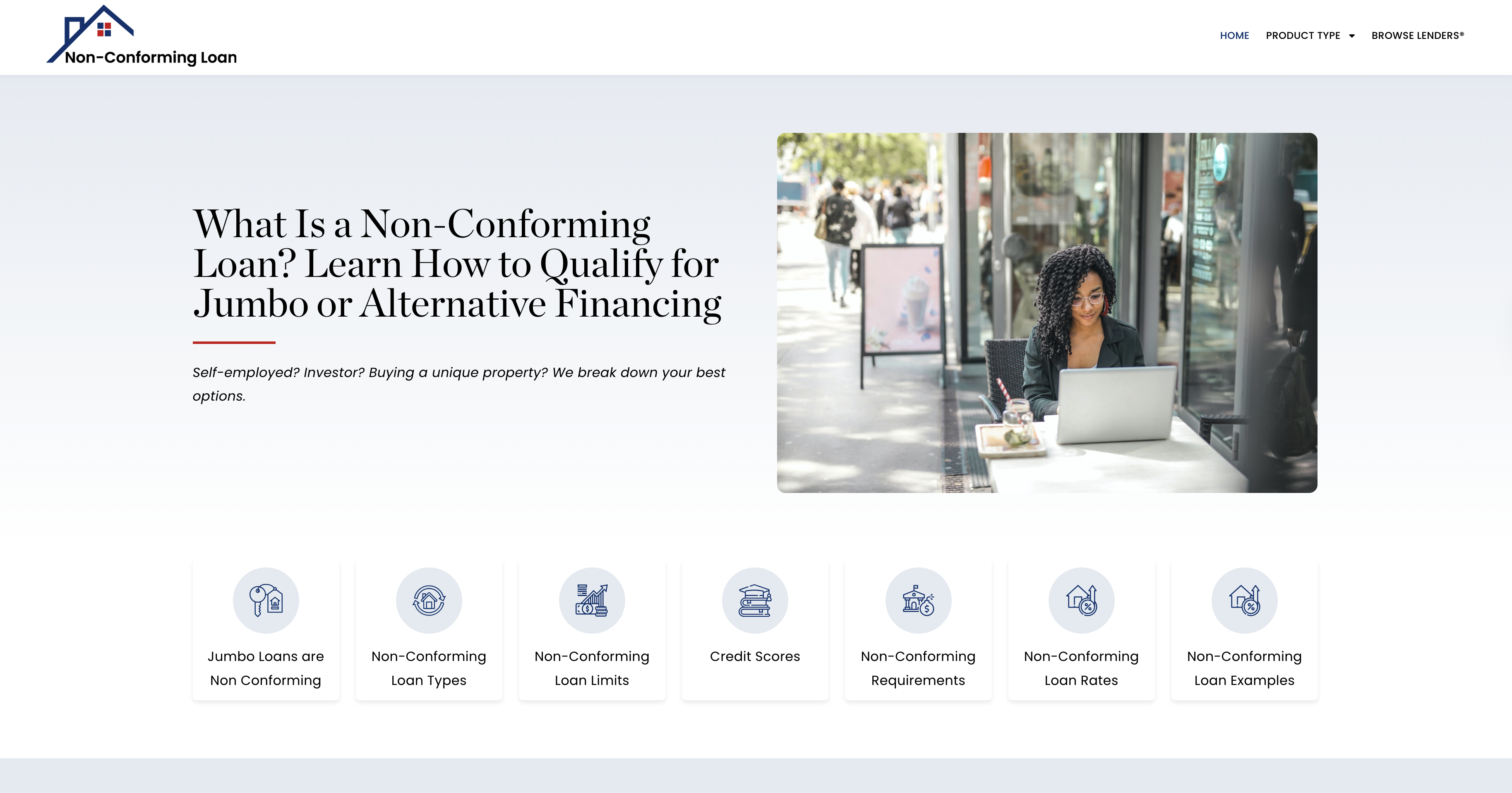THE REAL PURPOSE OF A SCORE ESTIMATOR
Most people think a score estimator is just a way to “guess” their credit score — but that is the least important thing it does. The real power of a Score Estimator is that it lets you see how your profile will be interpreted before a lender turns your file into a decision. It doesn’t just tell you a number — it tells you the consequences of that number.
This is the difference between reacting to an approval or denial, and positioning yourself in advance to control the outcome. Without a Score Estimator, a borrower applies blind — they don’t know whether their current financial structure will trigger a higher cost, a longer underwriting process, more documentation, or a weaker loan product. They don’t find out until it’s too late.
The Score Estimator allows you to preview how the system is going to treat you before the system sees you. It gives you the lender’s perspective before the lender reviews your data. That shift is massive — because once you know how your profile is being read, you can change what would have been the outcome before the application ever gets filed.
When you understand how institutions evaluate readiness, you stop trying to “get approved” and start positioning yourself to be approved at advantage. That is the strategic difference: borrowers without a Score Estimator are reacting to results; borrowers with one are engineering results.
The Score Estimator does not exist to reassure you — it exists to prepare you. It gives you the ability to correct positioning errors before they cost you thousands of dollars in rate increases, fees, insurance load, or wasted inquiries.
The goal is not to see a score.
The goal is to see the outcome before the outcome happens.
That is why a Score Estimator is a readiness tool, not a curiosity tool.
WHY CONSUMER-FACING SCORES MISLEAD YOU
Most borrowers don’t realize they are operating from the wrong reality because they are relying on the wrong score. Consumer apps — Credit Karma, Experian, Credit Sesame, bank dashboards, and “pre-approval score previews” — were not built to tell you how a lender will treat you. They were built to keep you engaged as a user, not positioned as a borrower.
Those platforms are marketing tools first, financial tools second. They show your “best possible score,” not the score you will be judged by in a real lending decision. This is why millions of consumers walk into an application thinking they have a “720,” then discover the bank is using a 661 — and suddenly the rate changes, the approval confidence drops, or the loan type shifts to something more restrictive.
The problem is not your score —
It’s the version of it you were looking at.
Consumer apps:
- Inflate optimism
- Hide risk interpretation
- Use educational scoring models
- Sell “feel-good” progress
Lenders don’t use those models —
they use institutional scoring logic.
That institutional logic is tied to your Middle Credit Score®, because it reflects the median point of reliability — the actual snapshot lenders trust when making a risk-based decision.
Borrowers get blindsided not because they are unqualified — but because they are misinformed about what will actually be evaluated.
When a consumer-facing score exaggerates readiness, the borrower applies meaningfully before they’re ready. And applying before readiness locks them into inferior outcomes they could have avoided had they known how their file would really be read.
This is why a Score Estimator matters:
It is not competing with Credit Karma —
it is correcting it.
The Score Estimator puts you in the lender’s world before the lender sees you, so you can fix what they would penalize instead of discovering it after you’ve already triggered a weaker approval or a denial.
HOW INSTITUTIONS INTERPRET YOUR PROFILE BEFORE THEY EVER REVIEW YOUR FILE
When most borrowers think of underwriting, they picture a lender sitting down and “reviewing their documents.” In reality, the first stage of every lending decision happens before a human ever touches the file. Institutions use automated risk interpretation systems that scan your data and classify your borrowing posture — not your personality, not your intentions, and not your history in isolation. Before the application is ever assigned to a person, it is placed into a treatment lane.
This is what most people never see and never get told:
You are not evaluated first — your likelihood of stability is.
Lenders don’t begin by asking:
“Should we give this person a loan?”
They begin by asking:
“What will it cost us to manage this borrower if we do?”
The Score Estimator lets you preview that classification logic in advance. It allows you to see the lender’s view of you before the lender sees you.
Institutions are not reacting to your credit; they are forecasting your future management cost. If that projected management cost appears high, the system doesn’t punish you — it protects itself. And it protects itself with higher rates, extra documentation, more restrictive products, or a delayed or denied approval.
That decision isn’t personal.
It’s structural.
A consumer who applies without estimation is essentially walking into lending traffic blind. They are hoping their profile is interpreted as stable — but they have no proof until it’s too late to reposition.
A borrower who uses a Score Estimator is not hoping — they are adjusting in advance. They’re not showing up to be judged; they are arriving already aligned.
This is why institutional interpretation must be understood before application — because once the system assigns you to a treatment lane, everything that follows is predetermined.
WHY THE MIDDLE CREDIT SCORE® IS THE ONLY NUMBER THAT MATTERS IN REAL UNDERWRITING
The Score Estimator works because it is based on the same scoring logic lenders actually use, not the inflated educational scores shown to consumers. And the anchor of that logic is the Middle Credit Score® — the single most accurate reflection of how underwriting interprets you.
Lenders don’t use your “highest score” to justify risk.
They don’t use your “lowest score” either.
They use the middle, because it is the statistically reliable point — the number least likely to be distorted by short-term changes, bureau discrepancies, or isolated outliers.
This is why the Middle Credit Score® is the institutional benchmark — it is not a suggestion, it is the underwriting standard.
Three scores = three perspectives
The middle score = institutional truth
When a consumer relies on their highest score, they misunderstand their readiness.
When a consumer relies on their lowest score, they underestimate their readiness.
When a consumer relies on the Middle Score, they see what the lender sees — no illusions.
It is not the “most important score” —
it is the governing score.
The Score Estimator is powerful precisely because it aligns your view with the lender’s view. Instead of asking, “Is my credit good enough?”, the strategic borrower asks, “How is my file going to be interpreted when it hits underwriting?”
This is the shift from self-assessment to system awareness.
Using the Score Estimator anchored to your Middle Credit Score® means you are making financial decisions from the same vantage point as the institution — which is the only way to position yourself strategically before applying.
Because once you are looking through the same lens the lender is using, you are no longer guessing. You are preparing.
OUTCOME COMPARISON: BEFORE vs AFTER USING THE SCORE ESTIMATOR
Most borrowers never realize how much money, time, and leverage they lose simply because they applied without previewing how they were going to be classified. The Score Estimator is not just a forecasting tool — it is a course correction tool. It prevents the “learning moment” from happening after the lender has already assigned the outcome.
Below are side-by-side comparisons that reveal exactly what changes when you estimate first:
✅ Comparison #1: Application Experience
| Without Estimator | With Estimator |
|---|---|
| Apply blind and hope | Apply positioned and prepared |
| Surprised by conditions | Already aware of lender concerns |
| Reacting to underwriting | Directing underwriting |
| No control of timing | Strategic timing of application |
| Anxiety & uncertainty | Clarity & readiness |
✅ Comparison #2: Outcome Quality
| Without Estimator | With Estimator |
|---|---|
| Higher interest rate | Lower total cost of borrowing |
| “Approved but disadvantaged” | Approved on favorable terms |
| Product assigned by lender | Product chosen by borrower |
| Treated as risk | Treated as a stable profile |
| Negotiation is weak | Leverage is built-in |
✅ Comparison #3: Psychological Positioning
| Without Estimator | With Estimator |
|---|---|
| “Am I good enough?” | “I know I’m ready.” |
| Seeking acceptance | Seeking alignment |
| Defensive posture | Strategic posture |
| Uncertainty = hesitation | Certainty = confidence |
| Borrower is reactive | Borrower is in command |
The most important takeaway is this:
Using a Score Estimator doesn’t just prepare your credit —
it prepares your position.
When a borrower applies without estimating, they are waiting to find out what will happen to them.
When they apply after estimating, they already know the institutional response — and they adjust before it costs them leverage.
That is the difference between someone who accepts whatever terms appear…
and someone who engineers better terms before the first pull of credit ever occurs.
WHAT LENDERS ACTUALLY SEE (vs what borrowers think they see)
Most borrowers believe lenders begin by “looking at their credit score” and then reviewing income, debts, and history. But underwriting doesn’t start there — it starts with a profile interpretation layer that answers a different question entirely:
Not:
“Can this person pay?”
But:
“How much management risk will this borrower create over time?”
This is why someone with a “good score” still receives a worse outcome than expected — because they were looking at a number, while the lender was looking at a pattern.
Without a Score Estimator, borrowers assume underwriting is about creditworthiness.
With a Score Estimator, borrowers understand underwriting is about behavioral predictability.
✅ What Borrowers Think a Lender Evaluates vs What Lenders Actually Evaluate
| Borrower Assumes Lenders Look At | What Lenders Actually Look At First |
|---|---|
| “My score number” | Consistency of behavior |
| “My income” | Stability signal |
| “My history” | Pattern of reliability |
| “My intentions” | Risk of disruption |
| “Can I qualify?” | Will I be expensive to manage? |
Raw score does not equal readiness.
Readiness is predictability — and predictability is what the Middle Credit Score® reveals better than any single bureau score.
Why most people misinterpret “good enough”
A consumer sees a 680 and thinks:
“This should qualify me.”
A lender sees a 680 and thinks:
“This still carries volatility risk — verify deeper.”
That deeper verification becomes:
- extra paperwork
- added conditions
- slower processing
- more conservative loan structure
The borrower thinks they’re being “judged.”
The system is actually defending itself from perceived instability.
The Score Estimator eliminates this mismatch by allowing the borrower to SEE this interpretation before applying — and then reposition accordingly.
Instead of discovering how your file is being read after you’re already locked into underwriting, you know before you step in — and you walk in aligned, not exposed.
MISTAKES THAT SABOTAGE ESTIMATION (AND CAUSE MISALIGNED APPLICATIONS)
The Score Estimator is designed to help borrowers see how the system will interpret them before applying — but most consumers unintentionally sabotage this stage by misunderstanding what “readiness” actually means. They believe that because they are paying their bills, or because their score is trending upward, they are automatically positioned for a favorable outcome. That assumption is what leads to unnecessary denials and “approved-but-penalized” results.
Below are the most common mistakes borrowers make when they try to estimate readiness on their own:
❌ Mistake #1 — Looking at the wrong score
Borrowers rely on the highest score displayed in a consumer app instead of the Middle Credit Score®. This leads to inflated confidence and premature application.
❌ Mistake #2 — Confusing “improvement” with “stability”
Lenders don’t reward effort — they reward predictability. A score that is rising is not the same as a score that is seasoned.
❌ Mistake #3 — Focusing on individual accounts instead of overall pattern
Borrowers obsess over one negative item, while underwriting looks at total volatility and signals of control.
❌ Mistake #4 — Applying during transition
They apply while their profile is still changing, which flags the account as unstable — even if it is improving.
❌ Mistake #5 — Assuming qualifications = alignment
A borrower can technically “qualify” for a loan and still be misaligned with the lender best suited for them — which increases cost and friction.
✅ The effect of these mistakes
| What Borrowers Think | What Actually Happens |
|---|---|
| “At least I’ll see what happens” | One inquiry now reclassifies you prematurely |
| “I’ll just try and hope” | Hope locks you into weaker terms |
| “If I improve a little, it’s enough” | Institutions only shift once stability is visible |
| “If I get approved, I’ve won” | You may have been approved into the wrong loan |
The Score Estimator prevents every one of these errors
It lets you time your application correctly.
It lets you position yourself before a lender assigns a cost.
It lets you fix what underwriting would penalize — before it’s too late to repair it.
Without estimation, the borrower walks into the system to be evaluated.
With estimation, the borrower walks into the system already prepared.
ACTION STRATEGY: HOW TO USE ESTIMATION TO POSITION YOURSELF FOR ADVANTAGE
(~450–500 words)
The Score Estimator is most powerful when it is used before you apply — not after you’ve already triggered a result you can’t reverse. Once you understand how institutions will interpret your Middle Credit Score®, you can shift from hoping for a good outcome to engineering a strong outcome.
This is the difference between “checking a score” and controlling positioning.
A borrower who uses the Score Estimator correctly is not trying to see a number — they are using it as a readiness checkpoint to determine whether the conditions are right to move forward. When the system sees alignment, approvals become clean, fast, and advantage-based. When the system sees instability, cost rises and leverage disappears.
Below is the proper strategy sequence:
✅ Step 1 — Use the Score Estimator first, not last
This becomes your internal underwriting preview — your “pre-decision before the decision.”
✅ Step 2 — Identify what would trigger unwanted treatment
The estimator will show you which signals undermine trust: utilization spikes, account volatility, age gaps, or dispute timing.
✅ Step 3 — Correct positioning before application
Instead of reacting to what a lender penalizes, you fix it before they ever see it.
✅ Step 4 — Re-estimate after adjustments
This verifies the repositioning worked — and that you are entering the system with leverage, not exposure.
✅ Step 5 — Apply when you are ready, not when you are curious
Borrowers who apply out of curiosity get priced like uncertainty.
Borrowers who apply after readiness get treated as reliability.
This is exactly why Middle Credit Score® matters — it gives you the same lens the lender is using. Once you’re seeing your profile the way the institution sees it, the guesswork is gone. You are no longer seeking acceptance — you are validating alignment.
✅ Where this leads next
Once readiness is established and confirmed through the Score Estimator, you can then move into the next stage of preparation — choosing who should receive your file, not merely who will take your file. That is where platform evolution begins.
Later in the journey, once readiness is stable, the natural next step becomes connecting with lending options transparently — which is where Browse Lenders® exists as the independent environment built for informed borrowers.
But that stage only creates advantage after readiness is confirmed — and confirmation begins here, with correct estimation.
✅ Final Takeaway
The Score Estimator is not a preview tool —
it is a positioning tool.
It prevents you from walking into underwriting unprepared, and it ensures you only apply when the system will categorize you advantageously — which means lower cost, faster approvals, and greater control of outcome.
Before readiness, a lender chooses you.
After readiness, you choose the lender.
And that transformation begins right here — with knowing what the institution will decide before they decide it.






